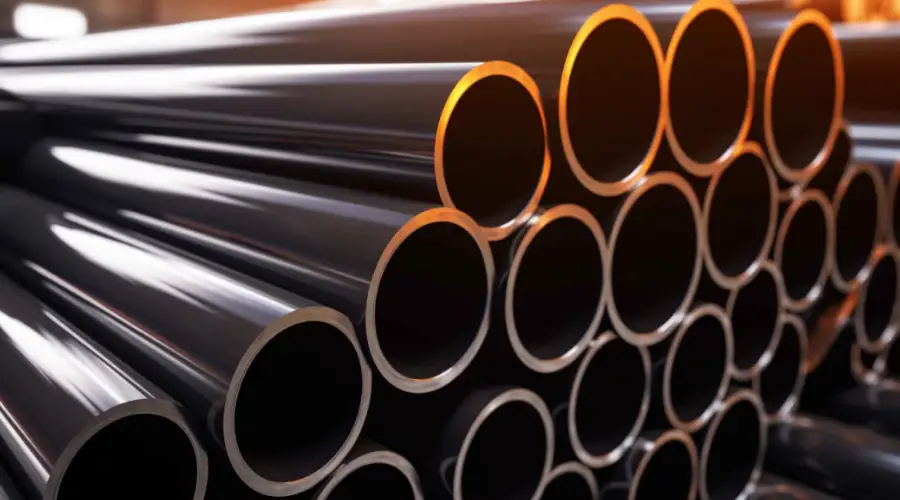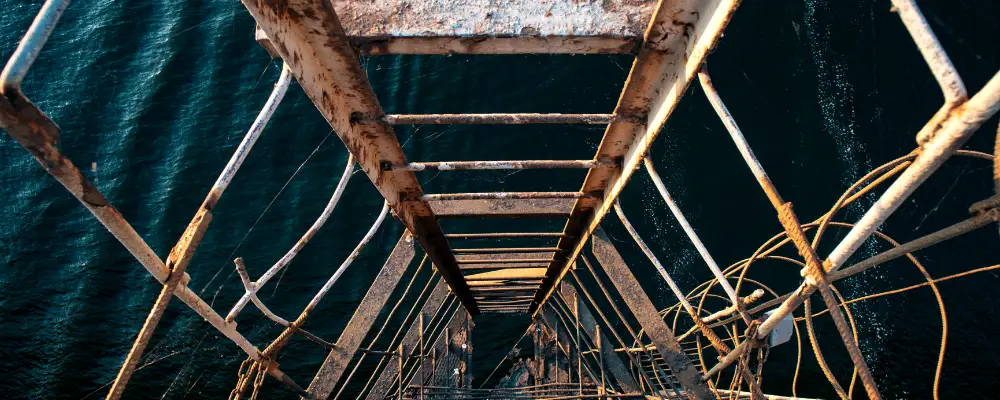Stainless steel is a popular metal that provides a resilient finish to the areas where it is used. This kind of metal is primarily recognized for its exceptional durability and used as corrosion resistant steel. But the rust formation is unavoidable when they are directly exposed to certain conditions like moisture, air, saltwater, and other harsh chemicals.
Unlike other metals, the depth of rust on the stainless steel is less, yet it seems unpleasant. Conducting frequent examinations can help you figure out the exact causes and apply appropriate rust-removing methods. If you are looking for the best and most effective rust removal ways, here are those:
How to Remove Rust From Stainless Steel
Here are the lists of easy ways to remove rust from your stainless or alloy steel surfaces:
Baking Soda and Water
One of the simplest and most widely used methods to remove rust from the stainless steel surface. Baking soda with water acts as a mild agent that helps eliminate the sediment rust without scratching the surface.
- To apply this method, mix baking soda with water to form a thick paste.
- Leave it on the surface for 20 to 30 minutes and wipe it with a soft cloth or sponge in a circular motion.
- Once the rust is completely removed, rinse the area with warm water and dry it out thoroughly.
White Vinegar
White vinegar is one of the most effective and natural rust removal methods. With no harsh chemicals, the acetic acid in the vinegar dissolves the rust on the stainless steel surface.
- Just pour the vinegar directly on the affected surface and let it sit for 10 to 15 minutes.
- Then use a soft cloth or sponge to wipe out the rust until it disappears.
- Finally, rinse the surface with water and dry completely.
Lemon Juice
Lemon is naturally citric, which is great enough to get rid off the rust easily. When you mix lemon juice with salt, the method will work even better.
- Apply some salt on the rusted surface and squirt some lemon juice on it.
- Allow it for 30 minutes so that the acidic content in the lemon gets deep into the affected area.
- Then you can gently rub it with a brush or soft cloth until the rust is eliminated.
- Ensure the area is thoroughly rinsed and dried after the experiment.
Citric Acid Solution
Citric acid is pretty effective in removing the rust on the stainless steel surface. Though it is a mild agent, it gets thoroughly into the affected area and breaks down the rust made of iron oxide. Unlike using harsh chemicals or cleaning agents, you can use this DIY rust removal method to protect your stainless cookware and surfaces.
- Similar to other methods, mix citric acid powder with water and apply it on the surface.
- To work well, rest them on the area for 30 minutes.
- You can remove it with a soft cloth and then rinse it with warm water.
Steel Wool Abrasion
Steel wool is a manual way to remove rust from the mild steel surface. It includes a tiny steel fiber to rub on the rusted surface and eliminate it effectively. It is available in different grades, from light-duty to heavy-duty. You can choose the grade according to the depth of rust formation. Generally, the higher-grade wools have thicker and rougher strands that allow you to remove the rust quickly.
- A gentle pressure is enough while scrubbing to avoid unnecessary scratching over the surface.
- Importantly, check and remove any leftover particles on the steel surface, which may cause further corrosion.
- Apply any rust prevention solution with oleic acid or other oils to protect the surface from new rust.
- When a large area is affected, perform a patch test on a small part to observe any scratches on the steel.
Oxalic Acid-Based Cleaners
Any serious rust stains can be cleared easily with oxalic acid-based cleaners. It is often used on commercial stainless steel surfaces where the corrosion is hard to remove. This method fits well for treating the embedded rust on stainless steel products like appliances, fixtures, and stainless steel kitchen sinks. Ensure you read the given instructions before applying them to things.
- Pour oxalic acid cleaner over the rusty spots and leave it for 10 to 15 minutes.
- Then wipe the area with a damp cloth until the rust is cleaned completely.
- Afterwards you can rinse and dry the surface.
Aluminum Foil and Water
Aluminum foil can wash out the rust stains effectively. It may sounds fishy, but it degenerates the contact of steel products and iron oxide.
- Dip some crumpled foil in the vinegar or water and apply it over the rusted area.
- Give a gentle pressure in the circular motion.
- After a few rubs, wipe the surface with a dry, soft cloth, and the result will be magical.
Electrolytic Rust Removal for Large-Scale Pipes
The electrolytic rust removal process is suitable for removing rust in large industrial pipes. This method utilizes electric current to loosen the extensive rust formation, particularly those items made of stainless steel in industrial settings, such as gas, oil or petrochemicals.
- Initially, set up the electrolytic bath and immerse the rusted item in a conductive solution.
- Use electrodes to create an electric current, which gradually flakes off the rust formed over the stainless steel surface.
- After treatment, wash the surface area thoroughly and dry to prevent rust.
Causes of Rust on Stainless Steel

Rust formation is quite common on any metal; however, stainless steel is somewhat exceptional. However, rust may occur due to various factors, and we must apply preventive measures accordingly. Let’s discuss common reasons below:
- When stainless steel products are directly exposed to moisture or air, the iron in the product will react with oxygen, forming rust. This process is named oxidation.
- Rust can also form when the steel is contaminated with chloride. Chloride ions are generally present in saltwater and some harsh chemicals that accelerate the rust formation on the steel surface.
- If your steel surface has cuts, scratches, or abrasions, it can lead to rust formation.
- Neglecting routine maintenance and repair allows corrosive substances to form, promoting rust.
- Choosing poor-quality stainless steel products can also be a significant reason for rust development. It has low resistance to corrosion and is hard to fight against the oxidation process.
Preventive Measures for Stainless Steel Rusting
Follow these simple and basic steps to prevent your stainless steel from rusting:
- It is recommended to clean and maintain the stainless steel surfaces often. You can simply use mild cleaner and warm water to protect the steel from rusting. Ensure you are not using abrasive cleaners or chemicals that damage the steel layer and lead to rusting.
- Applying protective coatings like sealants or wax over the surface can act as an additional barrier against the rust-forming elements.
- Keep your stainless steel products or surfaces from harsh environmental conditions like moisture, air, or direct sunlight, which accelerate rust formation.
Final Wordings
Compared to other metals, structural steel has high rust resistance. To keep the surfaces clean and rust-free, follow some simple methods that are listed in the aforementioned article. You don’t want to worry if your steel products have rust or corrosion. Make it shine once again with the easy removal methods that you have read above.

